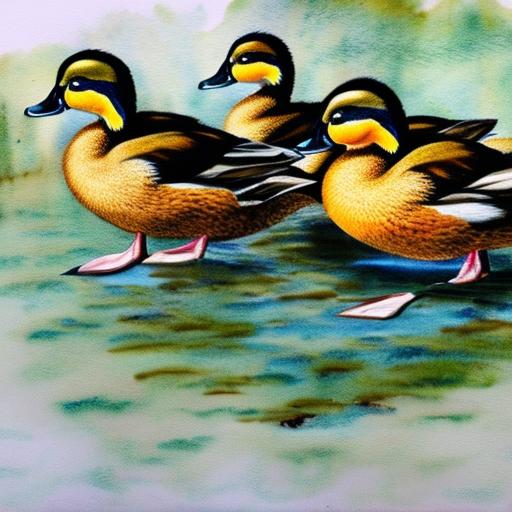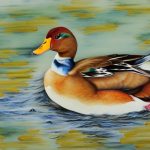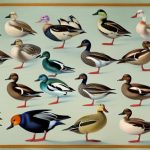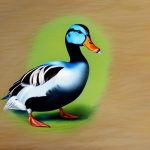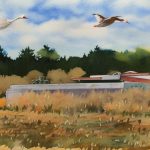Duck breeds come in a wide variety, each with its own unique characteristics and traits. From the popular Pekin duck to the adorable Mallard, there are many different breeds to choose from when it comes to raising ducklings. Whether you are looking for a breed that is known for its egg-laying abilities, or one that is prized for its meat, there is a duck breed out there to suit your needs. Understanding the different breeds and their specific traits is essential when it comes to choosing the right duck breed for your farm or backyard.
Duck breeds can be categorized into different groups based on their primary use, such as egg production, meat production, or ornamental purposes. Some breeds are known for their friendly and docile nature, making them great pets, while others are prized for their ability to forage and thrive in a free-range environment. Each breed also has its own unique physical characteristics, such as size, color, and feather patterns. Understanding the differences between duck breeds is important when it comes to selecting the right breed for your specific needs and preferences. In this article, we will explore some of the most popular duck breeds for ducklings, their characteristics and traits, and how to care for them as they grow and develop.
Key Takeaways
- There are many different duck breeds, each with their own unique characteristics and traits.
- Popular duck breeds for ducklings include Pekin, Khaki Campbell, and Indian Runner.
- Different duck breeds have varying characteristics and traits, such as size, egg production, and temperament.
- When choosing the right duck breed for your needs, consider factors such as space, climate, and intended use (e.g. eggs, meat, or pets).
- Caring for ducklings of different breeds involves providing appropriate housing, nutrition, and healthcare to support their growth and development.
Popular Duck Breeds for Ducklings
1. Pekin Duck: The Pekin duck is one of the most popular duck breeds for both meat and egg production. They are known for their large size, white feathers, and friendly disposition. Pekin ducks are excellent foragers and are well-suited for free-range environments. They are also prolific egg layers, making them a great choice for those looking to raise ducks for eggs.
2. Mallard Duck: The Mallard duck is perhaps one of the most recognizable duck breeds, with its vibrant green head and striking coloration. While Mallards are often found in the wild, they can also be raised domestically. They are known for their hardiness and adaptability, making them a great choice for those looking for a low-maintenance duck breed.
3. Khaki Campbell Duck: The Khaki Campbell duck is a popular choice for those looking to raise ducks for egg production. They are known for their excellent egg-laying abilities, often laying upwards of 300 eggs per year. Khaki Campbells are also known for their calm and friendly nature, making them a great choice for those looking to raise ducks as pets.
4. Rouen Duck: The Rouen duck is a large breed known for its striking coloration, with iridescent green heads and rich brown plumage. They are often raised for both meat and egg production and are known for their calm and docile nature. Rouen ducks are also excellent foragers and do well in free-range environments.
5. Muscovy Duck: The Muscovy duck is a unique breed known for its distinct appearance, with red wattles around the bill and a crest of feathers on the head. Muscovy ducks are often raised for meat production and are known for their lean and flavorful meat. They are also excellent foragers and do well in a variety of environments.
Characteristics and Traits of Different Duck Breeds
Each duck breed has its own unique characteristics and traits that make it well-suited for specific purposes. Understanding these traits is essential when it comes to choosing the right duck breed for your needs.
Pekin ducks are known for their large size, white feathers, and friendly disposition. They are excellent foragers and do well in free-range environments. Pekin ducks are also prolific egg layers, making them a great choice for those looking to raise ducks for eggs.
Mallard ducks are known for their vibrant green heads and striking coloration. They are hardy and adaptable, making them a great choice for those looking for a low-maintenance duck breed.
Khaki Campbell ducks are prized for their excellent egg-laying abilities, often laying upwards of 300 eggs per year. They are also known for their calm and friendly nature, making them a great choice for those looking to raise ducks as pets.
Rouen ducks are a large breed known for their striking coloration, with iridescent green heads and rich brown plumage. They are often raised for both meat and egg production and are known for their calm and docile nature.
Muscovy ducks are known for their distinct appearance, with red wattles around the bill and a crest of feathers on the head. They are often raised for meat production and are excellent foragers.
Choosing the Right Duck Breed for Your Needs
When it comes to choosing the right duck breed for your needs, there are several factors to consider. First and foremost, you should consider the primary purpose of raising ducks – whether it’s for egg production, meat production, or ornamental purposes. Different breeds have different strengths in these areas, so it’s important to choose a breed that aligns with your goals.
Another important factor to consider is the environment in which you will be raising your ducks. Some breeds are better suited for free-range environments, while others may thrive in more confined spaces. Consider the climate in your area as well, as some breeds may be more adaptable to extreme temperatures or specific weather conditions.
It’s also important to consider the temperament of the breed, especially if you plan on raising ducks as pets. Some breeds are known for their friendly and docile nature, while others may be more skittish or independent. Consider your own preferences and experience level when it comes to handling different temperaments.
Finally, consider the availability of resources such as feed, water, and shelter in your area. Some breeds may have specific dietary or housing needs that should be taken into account when choosing the right breed for your needs.
Caring for Ducklings of Different Breeds
Caring for ducklings of different breeds requires attention to their specific needs and requirements. Providing a warm and safe environment is essential for the health and well-being of ducklings, regardless of their breed.
When caring for Pekin ducklings, it’s important to provide them with plenty of space to move around and access to clean water for swimming. Pekin ducklings also require a balanced diet that includes high-quality duckling feed and access to fresh greens.
Mallard ducklings require a similar environment to Pekin ducklings, with plenty of space to move around and access to clean water. Mallard ducklings should also be provided with a balanced diet that includes high-quality duckling feed and access to fresh greens.
Khaki Campbell ducklings should be provided with a warm and safe environment, along with access to clean water and a balanced diet that includes high-quality duckling feed and fresh greens.
Rouen ducklings require a warm and safe environment with access to clean water and a balanced diet that includes high-quality duckling feed and fresh greens.
Muscovy ducklings should be provided with a warm and safe environment, along with access to clean water and a balanced diet that includes high-quality duckling feed.
Differences in Duckling Development and Growth

Duckling development and growth can vary between different breeds, with some breeds reaching maturity faster than others. Understanding these differences can help you provide the best care for your ducklings as they grow and develop.
Pekin ducklings typically grow at a rapid rate, reaching maturity within 7-8 weeks. They require a diet that is high in protein to support their rapid growth.
Mallard ducklings grow at a slightly slower rate than Pekin ducklings, reaching maturity within 8-9 weeks. They also require a diet that is high in protein to support their growth.
Khaki Campbell ducklings grow at a similar rate to Pekin ducklings, reaching maturity within 7-8 weeks. They require a diet that is high in protein to support their rapid growth.
Rouen ducklings grow at a slightly slower rate than Pekin ducklings, reaching maturity within 8-9 weeks. They also require a diet that is high in protein to support their growth.
Muscovy ducklings grow at a slower rate than other breeds, reaching maturity within 10-12 weeks. They require a diet that is high in protein to support their growth.
Understanding the differences in development and growth between different duck breeds can help you provide the best care and support for your ducklings as they mature into healthy adult ducks.
Conclusion and Further Resources for Duck Breed Information
In conclusion, understanding the different characteristics and traits of various duck breeds is essential when it comes to choosing the right breed for your specific needs. Whether you are looking to raise ducks for egg production, meat production, or ornamental purposes, there is a breed out there to suit your goals.
For further resources on duck breed information, there are many reputable sources available online that provide detailed information on different duck breeds, including their care requirements, temperament, and specific traits. Additionally, reaching out to local breeders or joining online forums and communities dedicated to raising ducks can provide valuable insights and advice from experienced duck enthusiasts.
By taking the time to research and understand the specific needs of different duck breeds, you can ensure that you provide the best care and support for your ducklings as they grow into healthy adult ducks. Whether you are new to raising ducks or have years of experience, there is always something new to learn about these fascinating birds.
If you’re considering raising ducklings, it’s important to understand the different breeds and their specific needs. Whether you’re interested in raising Pekin, Khaki Campbell, or Indian Runner ducklings, each breed has its own characteristics and requirements. To ensure the health and well-being of your ducklings, it’s essential to provide them with a suitable environment and proper nutrition. For more information on creating a comfortable living space for your ducklings, check out this helpful article on what to feed ducks. Understanding their dietary needs is crucial for their growth and development.
FAQs
What are the different duck breeds as ducklings?
There are several different duck breeds that are commonly available as ducklings, including Pekin, Khaki Campbell, Rouen, and Indian Runner.
What are the characteristics of Pekin ducklings?
Pekin ducklings are known for their white feathers, orange bills, and friendly disposition. They are a popular choice for meat production and are also commonly kept as pets.
What are the characteristics of Khaki Campbell ducklings?
Khaki Campbell ducklings are known for their khaki-colored feathers and their excellent egg-laying abilities. They are a popular choice for backyard duck keepers and small-scale egg production.
What are the characteristics of Rouen ducklings?
Rouen ducklings are similar in appearance to Mallard ducks, with beautiful iridescent green and blue feathers. They are a dual-purpose breed, suitable for both meat and egg production.
What are the characteristics of Indian Runner ducklings?
Indian Runner ducklings are known for their upright posture and distinctive “runner” gait. They are excellent foragers and are often kept for both egg production and pest control in gardens.
Meet Walter, the feathered-friend fanatic of Florida! Nestled in the sunshine state, Walter struts through life with his feathered companions, clucking his way to happiness. With a coop that’s fancier than a five-star hotel, he’s the Don Juan of the chicken world. When he’s not teaching his hens to do the cha-cha, you’ll find him in a heated debate with his prized rooster, Sir Clucks-a-Lot. Walter’s poultry passion is no yolk; he’s the sunny-side-up guy you never knew you needed in your flock of friends!

